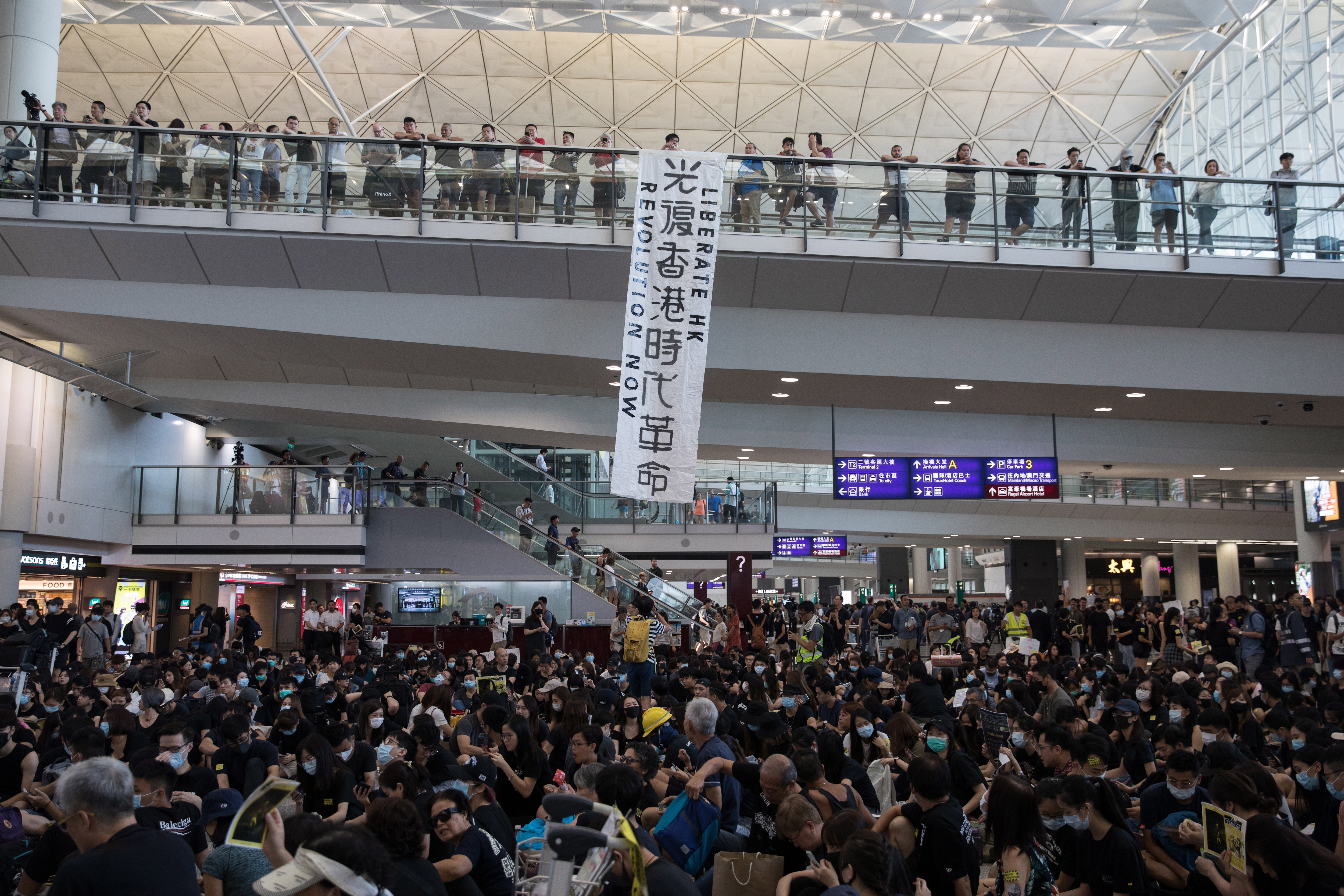By Mike Ives
Photographs by Lam Yik Fei

HONG KONG — Soon after a woman in Hong Kong was hit in the eye at a protest, her likeness began circulating as a meme on internet forums where many demonstrators blamed her injury on the police.
Within a couple of weeks, protesters had raised over $25,000 online to build a 13-foot statue of her.
They called it Lady Liberty Hong Kong, a nod to the Statue of Liberty in New York City.
Street art and graphic design are defining features of the pro-democracy demonstrations that have roiled the semiautonomous Chinese territory since June.
They called it Lady Liberty Hong Kong, a nod to the Statue of Liberty in New York City.
Street art and graphic design are defining features of the pro-democracy demonstrations that have roiled the semiautonomous Chinese territory since June.
Artists often work quickly and anonymously, and present their oeuvres either in Reddit-like internet forums or public places with heavy foot traffic.
Much of the art channels pop-cultural aesthetics taken from Marvel Comics and Japanese anime.
Much of the art channels pop-cultural aesthetics taken from Marvel Comics and Japanese anime.
And in a financial hub where legions of young people are glued to Instagram, even the street art seems designed to go viral online.
Some protest artworks depict the movement’s heroes — including Lady Liberty Hong Kong and a demonstrator in a yellow raincoat who fell from a building in June — in somber, reverential terms. Others are whimsical sendups of Chinese officials, including Carrie Lam, the city’s embattled leader.
These pop art-style posters of Lam, below, were designed to be stepped on as pedestrians cross a bridge leading to a train station in the city’s Tsing Yi district.

The poster below, on a wall in the Ma On Shan district in northeastern Hong Kong, likens front line protesters to the protagonists of a battle scene in a famous Eugène Delacroix's oil painting Liberty Leading the People, 1830.
Some protest artworks depict the movement’s heroes — including Lady Liberty Hong Kong and a demonstrator in a yellow raincoat who fell from a building in June — in somber, reverential terms. Others are whimsical sendups of Chinese officials, including Carrie Lam, the city’s embattled leader.
These pop art-style posters of Lam, below, were designed to be stepped on as pedestrians cross a bridge leading to a train station in the city’s Tsing Yi district.

The poster below, on a wall in the Ma On Shan district in northeastern Hong Kong, likens front line protesters to the protagonists of a battle scene in a famous Eugène Delacroix's oil painting Liberty Leading the People, 1830.
In the foreground, a protester wearing a helmet waves a black flag that shows a dead Bauhinia, Hong Kong’s official flower.


The posters in the image below are plastered on the ceiling of a pedestrian underpass in the Kwai Fong district in northern Hong Kong.
They depict a protester named Chan Yi-chun, who was arrested last month during clashes with the police.

The center drawing below shows Lam, Hong Kong’s chief executive, wiping away tears while simultaneously aiming a gun resting on her lap.

The center drawing below shows Lam, Hong Kong’s chief executive, wiping away tears while simultaneously aiming a gun resting on her lap.
The poster illustrates a popular sentiment in the antigovernment camp: that while Lam has presented herself publicly as empathetic, she has privately encouraged police violence against demonstrators.

Many protest artworks, like the one below in the Tai Po district, depict subjects in face masks, which demonstrators use to conceal their identities.

Many protest artworks, like the one below in the Tai Po district, depict subjects in face masks, which demonstrators use to conceal their identities.
When Lam invoked emergency powers in early October to ban face coverings during protests, she set off further demonstrations.

The image below shows one of the many so-called Lennon Walls that began springing up across town in June.

The image below shows one of the many so-called Lennon Walls that began springing up across town in June.
The walls are named for one in Prague on which young people in the 1980s posted messages airing their grievances against the Communist regime that ruled Czechoslovakia.

The drawing in red below, of the woman who was injured in the eye during a protest in August, was on display during a rally later that month at Hong Kong’s international airport.

One of the largest Lennon Walls in Hong Kong sits near a complex of government buildings that includes the city’s legislature.

The drawing in red below, of the woman who was injured in the eye during a protest in August, was on display during a rally later that month at Hong Kong’s international airport.

One of the largest Lennon Walls in Hong Kong sits near a complex of government buildings that includes the city’s legislature.
A small group of hard-core protesters stormed and vandalized the legislative chamber on July 1, the anniversary of the former British colony’s handover to Chinese control in 1997.

Some critics of the Chinese government have mocked Chinese dictator Xi Jinping, by saying that he resembles Winnie the Pooh, the cartoon bear.

Some critics of the Chinese government have mocked Chinese dictator Xi Jinping, by saying that he resembles Winnie the Pooh, the cartoon bear.
The street collage below was photographed on Oct. 1, hours after Xi presided over a military parade celebrating the 70th anniversary of Communist rule in China.

Protesters have also papered some sidewalks with black-and-white pictures of Xi himself.

Protesters have also papered some sidewalks with black-and-white pictures of Xi himself.
The idea was for passers-by to step on his face, symbolically erasing his presence.




